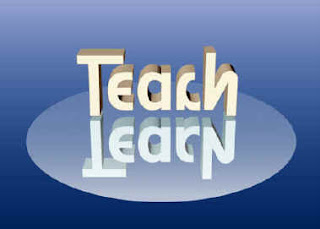What's the deal with UDL in Higher Ed and the online learning space, in particular?
I've been asked many times recently by faculty, administrators, and even students: What's the deal with UDL in Higher Ed, and in particular within the online learning space? Why is everyone all of a sudden talking about accessibility and Universal Design (UD)?
Good question! There has certainly been a significant increase in interest in universal design as an approach for teaching and learning over the last 5 to 10 years within the Higher Ed community by the general community. Some of this has to do with a focus on improving the inclusion of educational services and academic coursework on college and university campuses. Additionally, a number of high-profile cases have occurred in the last few years regarding lawsuits where individuals with varying (dis)abilities were not provided with equitable levels of services in educational institutions, ranging from in-person lack of accommodations to online lack of accommodations in MOOC environments. This has brought greater attention to the immediate need for inclusivity and accessibility of educational content to our faculty as well as our educational administrators in colleges and universities. The end result is an increased focus on and (hopefully) increased level of accessibility in the education space both for students enrolled in classes with technology integrated and also for the general population accessing online resources through University's website. All classes across all formats should be inclusive and accessible, and the approach to do so requires much forethought, and strategic and many times innovative planning and implementation of programs in order to support the needs of all constituents.
Strategically institutions have also modernized a handful of related academic degree programs to include educational components focused on accessibility, with degrees, concentrations, and specializations focused in special education, technology integration, and related fields of education and practice. This influx of individuals with specialized degrees including a focus on accessibility has in turn impacted the general practices in K-12 and Higher Education environments both by their work with peers and their influence on upper level administrators. We're seeing a shift in the education that are new faculty are graduating with--better preparing them to address accessibility needs--and also in how they communicate these needs and priorities to their administrators. Again, positives across the board with the ultimate outcome of reaching successfully all students in our educational content and services.
The field of accessibility, like much in technology and online learning (the core of our blog), is ever-changing. We are impacted significantly by the federal guidelines, changes in best practices, the technology that is implemented and frequency with which it is adopted and made available to students, and a number of other factors. It is a constantly moving target for faculty in preparing their courses to meet the needs of all learners. Our campus, in particular, I am proud to say, has implemented a number of exceptionally well-built initiatives to support all faculty, staff, students, and student support services in this endeavor towards all-inclusive accessibility, and we're excited to be a leader in the Higher Ed space with our unique approach to providing full access to all students in a proactive manner.
The COOL team has compiled an extensive list of Accessibility Resources in this Google doc. Please refer to our site for excellent resources to learn more about accessibility and UD in online and the Higher Education environment.
Thanks for reading!
~Sherri



Comments
Post a Comment